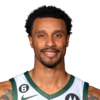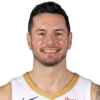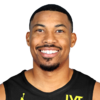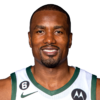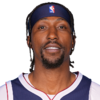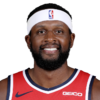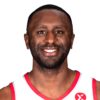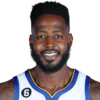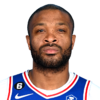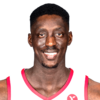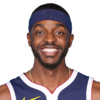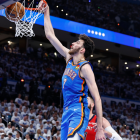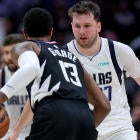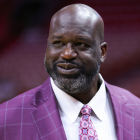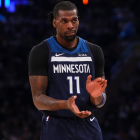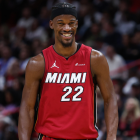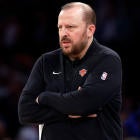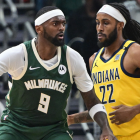The term "3-and-D" is still relatively new to NBA lexicon, but it has been popularized to the point where draft prospects use it to describe themselves. As important as playmaking is, teams still want players who are content to play supporting roles, spacing the floor and playing solid defense. Shooting, of course, is highly valued, but it's increasingly apparent that if you can't at least hold your own on the other end of the floor, you might find yourself benched in the playoffs.
With free agency just a few days away and executives looking for two-way role players, here's a look at the market for 3-and-D guys:
The only point guard on his list, much of Hill's value is derived from the fact that he can help his team in multiple ways without the ball in his hands. It's not that Hill can't create, but he has spent the vast majority of his career as a secondary playmaker, and he's an excellent spot-up shooter and defender. He is long and strong enough to guard 2s and most 3s, and if he doesn't return to Utah, it would be wise for the Spurs or the Timberwolves to clear cap space to try to sign him.
Like Hill, Redick is a veteran who has contributed to winning teams for years and is finally in line for the big payday he deserves. If you look around the league, there aren't a lot of guys like him -- he is brilliant at using screens, never gets tired and, as well as being a 41.5 percent career 3-point shooter, he is a dogged defender who makes up for his lack of length by competing like crazy and limiting his mistakes. The Clippers should do everything they can to avoid losing him to Philadelphia or Brooklyn.
He isn't the third star Washington needs, but the franchise is probably going to have to pay him like one. Porter went from a good to great 3-point shooter at the perfect time, making 43.4 percent of his 3s last year while remaining a versatile defender capable of playing either forward position. There are a couple of concerns -- he is limited as a playmaker and his 3-point shooting drastically declined after the All-Star break -- but those are mitigated by the fact that he just turned 24.
There's no one else on this list I'd categorize as a center, though Ibaka has played plenty of minutes at power forward. It's time for that to change -- in a smaller and more skilled NBA, his ability to space the floor and protect the rim has become much more valuable at the 5 spot. He's not quite as springy as he used to be, but that combination of abilities is still worth paying for. Unless Toronto decides to blow it up, it should try to re-sign him and move Jonas Valanciunas.
Is KCP ready for a bigger role? His usage rate has not cleared 20 percent in his four years in Detroit, and teams offering him max money are likely hoping he can be more than a 3-and-D guy. Even if he's not ready to do more on offense, he's a disruptive defender (especially against 1s) who can get hot in a hurry. The problem is that his shooting is streaky -- his 35 percent mark from deep was a career high and he has never been a particularly efficient player.
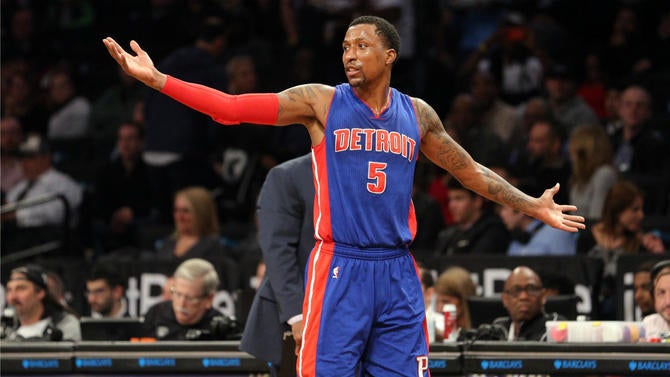
Ingles is all about efficiency, in terms of his percentages (44.1 percent from 3-point range, 60.4 percent true shooting percentage last season) and his decision-making. Any team that signs him will be excited about his ability to guard multiple positions, stretch the floor and move the ball. He is an absolutely perfect fit in Quin Snyder's system, but Utah had better be ready to compete for his services on the open market.
Out of the spotlight in Indiana, Miles is exactly the kind of role player that winning teams need. He made a career-high 41.3 percent of his 3s last year, and he's a plus defender as long as he's not being forced to battle with physical power forwards in the paint. In a league where two-way wings are at a premium, contenders should be trying to get him.

I'm cheating a little bit by including Patterson on this list, as he's more of an all-around glue guy than someone who fits the 3-and-D archetype. It's unclear if anyone will pay him as a starter, but as a 37.2 percent 3-point shooter and a high-IQ player who can guard wings and bigs, he's the kind of complementary piece who can help just about any team. His poor shooting in the postseason, however, did not do much for his value.
CBS Sports' Matt Moore called Green "one of the best values on the market' because he can defend just about everybody and made 38.2 percent of his 3s last season. This might sound hyperbolic, but it would be disastrous for Memphis to lose him -- he plays a crucial role on both ends of the floor.
Ordinarily a 29.4 percent 3-point shooter wouldn't make this list, but the hope is that he'll be able to build on his 35.1 percent playoff mark. No one on this list is more athletic, which makes him particularly important to a San Antonio team that isn't exactly full of elite athletes.
Long one of the smartest defensive minds in the game, out of nowhere Mbah a Moute became a 39.1 percent 3-point shooter at 30 years old. Most of those looks were wide open because defenders had to help off him, but it's not a stretch to say he found new life as an offensive player in Los Angeles. The question is whether that will travel.
Like Mbah a Moute, Tucker has never been considered much of a shooter, but teams who left him open in the corner were punished last season. He made 40 percent of his 3s in Toronto, and he immediately became the team's toughest, most intense defender. Tucker plays much bigger than his listed height of 6-foot-6, and he's especially adept at annoying star players.
It still seems shortsighted and silly that the Pelicans waived Casspi (and lost his Bird rights) late in the season when he got injured, as his shooting range, hustle and versatility could really help them. Contenders like Cleveland, San Antonio and Houston should try to convince him to take a discount.
After three underwhelming years in Chicago, Snell found his place in Jason Kidd's system. In Milwaukee he made 40.6 percent of his 3s, giving the team 29 solid minutes on the wing each night and guarding 1s, 2s and 3s.
Stop laughing! Lakers coach Luke Walton asked Young to guard the best perimeter player most nights, and the longtime gunner accepted the challenge. He still won't be confused for a stopper, but he played well enough overall to decline his player option and test free agency.
After being one of New York's few above-average defenders, this journeyman should finally find a home on a multiyear deal this summer. He was unable to sustain the hot shooting he showed in Chicago in 2015-16, but he shot 3-pointers more frequently than ever before as a Knick. If the efficiency improves, he could be a steal.
Note: Players who are known as playmakers (Andre Iguodala and Dion Waiters, for example) didn't make the list, and neither did those who are good at 3s or D but not both (like Andre Roberson or Bojan Bogdanovic).







